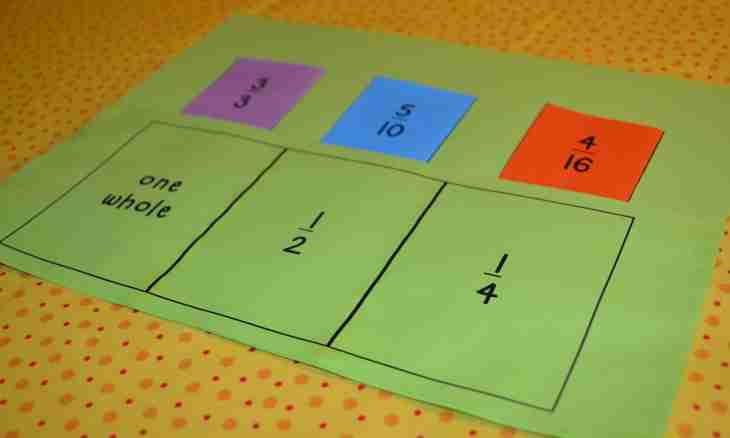Simple fractions (ordinary) is a part of unit or several its parts. It has numerator and a denominator. The denominator is a number of equal parts into which unit is divided. The numerator is a number of the taken equal parts. With simple fractions it is possible to carry out the simplest arithmetic operations: addition, subtraction, comparison, multiplication and division.
It is required to you
- Basic knowledge on arithmetics, the multiplication table
Instruction
1. Take two simple (ordinary) fractions which are required to be increased at each other. Are suitable for multiplication any simple (common fractions). If the fraction contains the whole part, then it should be given to the wrong look, that is to increase the whole part by a denominator of a fractional part and to put with numerator of a fractional part. The denominator at the same time remains the same. For example: 4 1/3 = (4*3+1)/3 = 13/3;5 3/8 = (5*8+1)/8 = 41/8; According to the rule of multiplication of simple (ordinary) fractions that to increase number on fraction needs to increase it by numerator of fraction and to divide the received work into a fraction denominator. So that to receive result of multiplication of two simple (ordinary) fractions it is necessary to divide the work of their numerators into the work of their denominators. For example, we have two simple (ordinary) fractions 1/4 and 3/5vozmite their numerators - 1 and 3 and multiply them among themselves. For this purpose use the multiplication table. In a column, on crossing of two numbers, there is a result of their work.1*3=3
2. Take their denominators – 4 and 5 and multiply them among themselves. Use the multiplication table: 4*5=20razdelite the turned-out numerator on the turned-out denominator. The answer - 3/20;
3. Division in this case means a type of record of simple (ordinary) fractions. The dividing line is for this purpose used. The numerator registers from above lines, and a denominator – from below. Also at record the idle time (ordinary) fraction can be used the sign a direct slash "/" If simple (ordinary) fractions have signs, then at multiplication the same rules, as with any prime numbers work. Two negative signs give minus, two positive – plus if one sign positive, and other sign negative, then – minus. For example: - 1/3 * 1/6 =-1/18; - 2/3 *-5/7 = 10/21;
